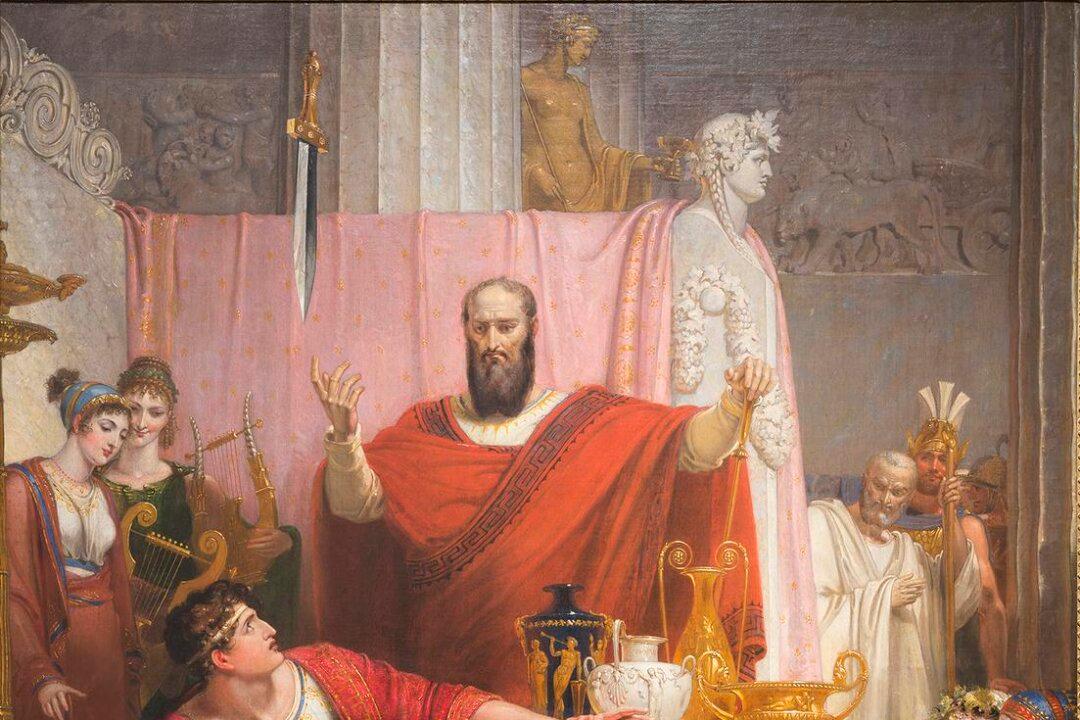The “Sword of Damocles” is a moral tale that comes from the Roman scholar Cicero. Damocles was a servant to a fourth- and fifth-century king named Dionysius II.
Dionysius II was a miserable king who ruled his empire with a cold heart, making many enemies in the process. He was always afraid of being assassinated, and because of this, he surrounded his abode with a moat. He even went as far as to let only his daughters trim his beard.





